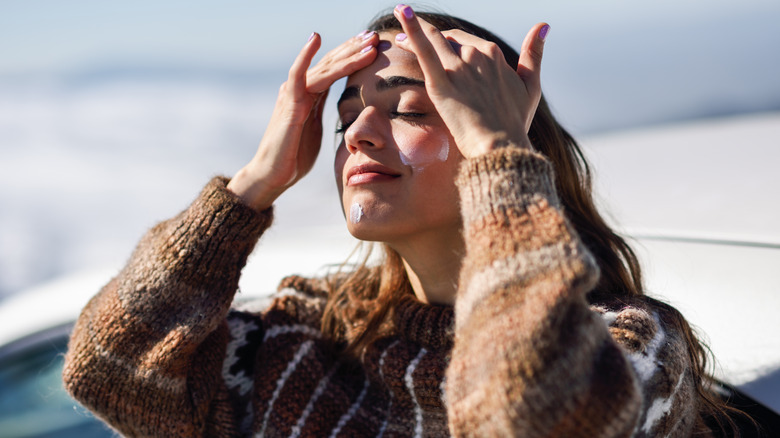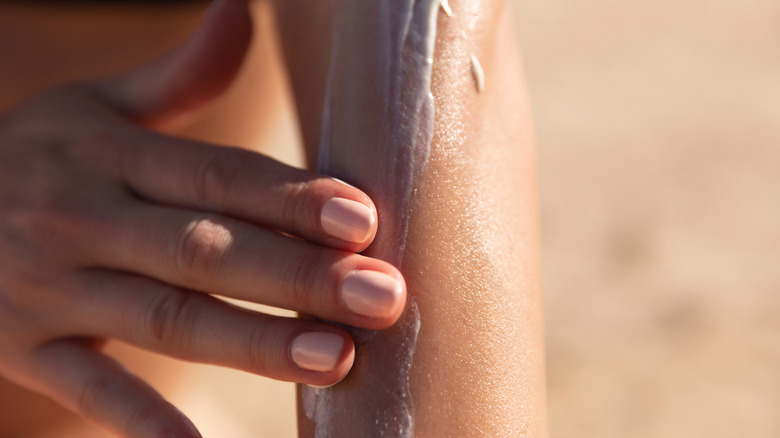Should You Put Sunscreen On Your Scalp?
While your hair offers some protection from the sun's harmful, cancer-causing ultraviolet (UV) rays, it is not enough (via Cleveland Clinic). According to the Skin Cancer Foundation, everyone — but especially people who have thinning hair or bald spots — needs to take extra precautions. One of the best ways to protect your scalp is to wear a hat, especially if it is labeled with an ultraviolet protection factor (UVF) of 50+. However, since it's not always possible to wear a hat every minute you're outdoors, you should be putting sunscreen on your scalp.
Any type of sunscreen you use on your face can also be used on your scalp. "It may make your hair greasy and goopy, but you need that layer of coverage actually touching the skin," says Jennifer Lucas, a dermatologist at the Cleveland Clinic, in an article on the hospital's website. "You may prefer a gel based sunscreen to more effectively cover and protect this area." There are also products specifically formulated for the hair and scalp. To prevent sunscreen from running down your face and into your eyes, choose formulas that are oil-free and water resistant (via Skin Cancer Foundation). Stick sunscreens can help make application easier for this area. If you have sensitive skin, mineral formula sunscreens containing zinc oxide or titanium dioxide may be a good option. Make sure to apply sunscreen when hair is dry to the areas where it parts, as well as any areas of thinning hair or bald spots.
Other sunscreen safety tips
According to the American Academy of Dermatology (AAD), you should wear sunscreen every day you are outside. The sun emits harmful UV rays year round, even on cloudy days. Water, sand, and snow reflect the sun's rays and therefore increase the need for protection with sunscreen. It's estimated that one in five Americans will get skin cancer at some point in their life. Anyone of any age, race, or gender can get skin cancer.
The AAD recommends choosing a sunscreen that has broad spectrum protection against both UVA and UVB rays, has a sun protection factor (SPF) of 30 or higher, and is water resistant. Sunscreen should be applied to all areas of the skin that are not covered by clothing. A good rule of thumb is that it should take about a shot-glass-worth of sunscreen to cover an adult body. In addition to the scalp, other common areas of the body that are often forgotten when applying sunscreen include tops of feet, neck, ears, and lips. When spending time outdoors, sunscreen should be reapplied every two hours or after swimming or sweating.


